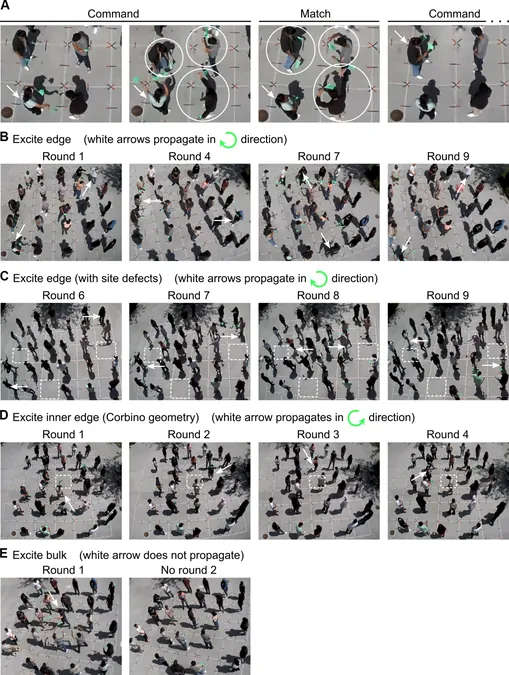
Dancing Through Science: How a Choreographed Performance Explains Topological Insulators
2024-11-05
Author: Siti
Introduction
In an innovative blend of education and performance art, researchers at the University of California, San Diego, have taken an unconventional approach to make complex scientific principles more accessible. Through a choreographed dance with high school students from Orange Glen High School in Escondido, they showcased the fascinating world of topological insulators, a pivotal area in the realm of quantum materials.
The Project
The project, masterminded by former graduate student Matthew Du and UC San Diego's Associate Professor of Chemistry and Biochemistry Joel Yuen-Zhou, was recently spotlighted in Science Advances. Yuen-Zhou explained their mission succinctly: "Science can often seem daunting. Our aim was to demonstrate that these sophisticated concepts in physics and chemistry can be understood when presented in a digestible format."
Understanding Topological Insulators
Topological insulators are cutting-edge quantum materials with the unique property of being insulative on the inside while conducting electricity on their surfaces. To illustrate this, Yuen-Zhou likened a topological insulator to a burrito: the filling represents the insulating core, while the tortilla signifies the conductive exterior. These materials are notable for their resilience to defects and disorder, making them critical for advanced technologies like quantum computing, highly efficient electronics, and innovative laser systems.
Dance as a Visual Aid
To visualize the properties of topological insulators, the researchers designed a "dancefloor" using blue and red tape to create a grid that represented the material's structure. Du devised a choreography based on specific movement rules that mirrored the behavior of electrons within these materials. This concept was rooted in the Hamiltonian framework of quantum mechanics, which describes a system’s total energy and its components.
Choreography and Movement Rules
Each dancer had flags and a numbered set of movements correlating to the theoretical motions of electrons: - **1** = wave flags with arms up - **0** = remain still - **-1** = wave flags with arms down Dancers would react to their neighbors’ movements according to the color of the tape on the floor—copying movements from neighboring blue-taped sections, while inversely responding to those on red tape. This dynamic represented the robustness of topological insulators, highlighting their ability to maintain functionality despite disruptions or imperfections.
Connections to Chemistry and Photonics
Aside from topological phenomena, Yuen-Zhou's lab also delves into chemical reactions and photonics, so the researchers drew an intriguing parallel between dance movements and wave patterns, further enriching the educational experience.
Conclusion
Du, a dedicated educator with a passion for outreach and dance, saw this project as a way to simplify complex scientific concepts. "We aimed to make science fun and relatable," he remarked. "Our hope was that students would leave with a sense that science isn't just about equations and theories—it's a part of our everyday lives." As the world of quantum materials continues to evolve, the groundbreaking methods employed in this dance project illuminate how innovative perspectives can transform scientific communication, making it not only understandable but also enjoyable. Who would have thought that the secrets of quantum mechanics could be expressed through the beauty of movement? This captivating fusion of art and science opens new doors for educational engagement in the STEM fields.
 Brasil (PT)
Brasil (PT)
 Canada (EN)
Canada (EN)
 Chile (ES)
Chile (ES)
 España (ES)
España (ES)
 France (FR)
France (FR)
 Hong Kong (EN)
Hong Kong (EN)
 Italia (IT)
Italia (IT)
 日本 (JA)
日本 (JA)
 Magyarország (HU)
Magyarország (HU)
 Norge (NO)
Norge (NO)
 Polska (PL)
Polska (PL)
 Schweiz (DE)
Schweiz (DE)
 Singapore (EN)
Singapore (EN)
 Sverige (SV)
Sverige (SV)
 Suomi (FI)
Suomi (FI)
 Türkiye (TR)
Türkiye (TR)